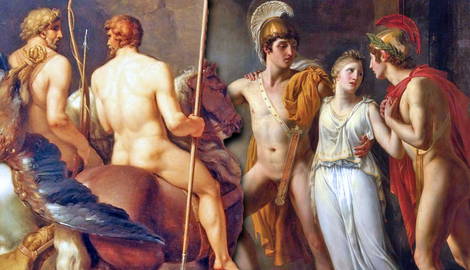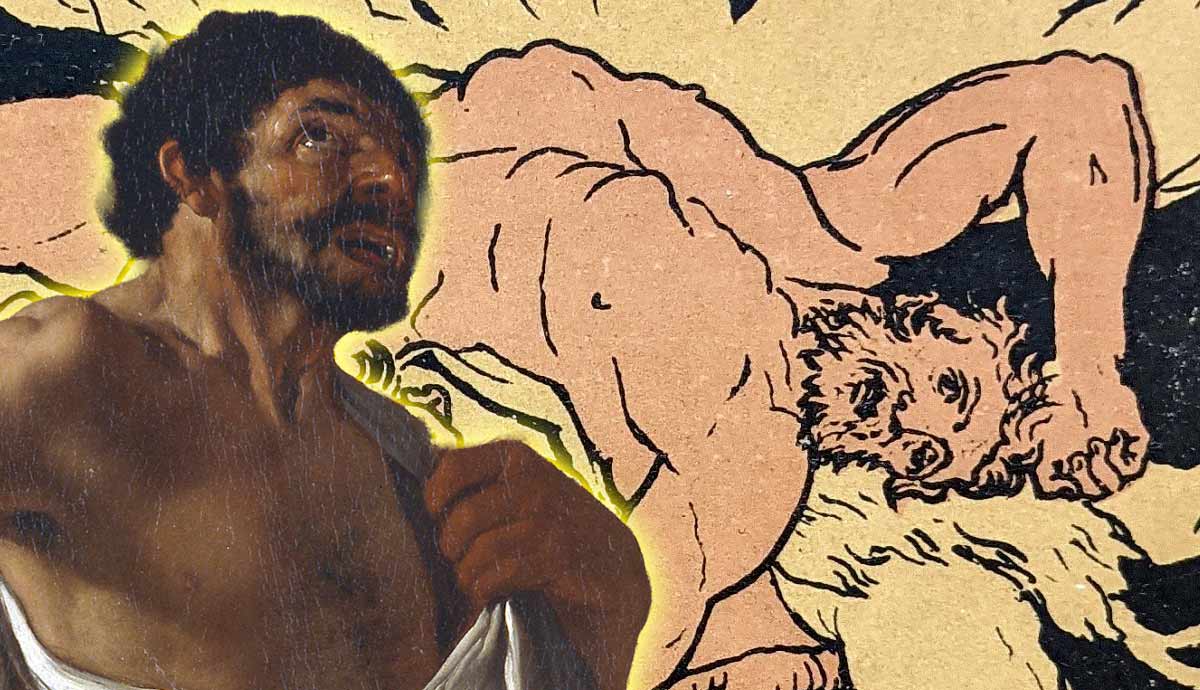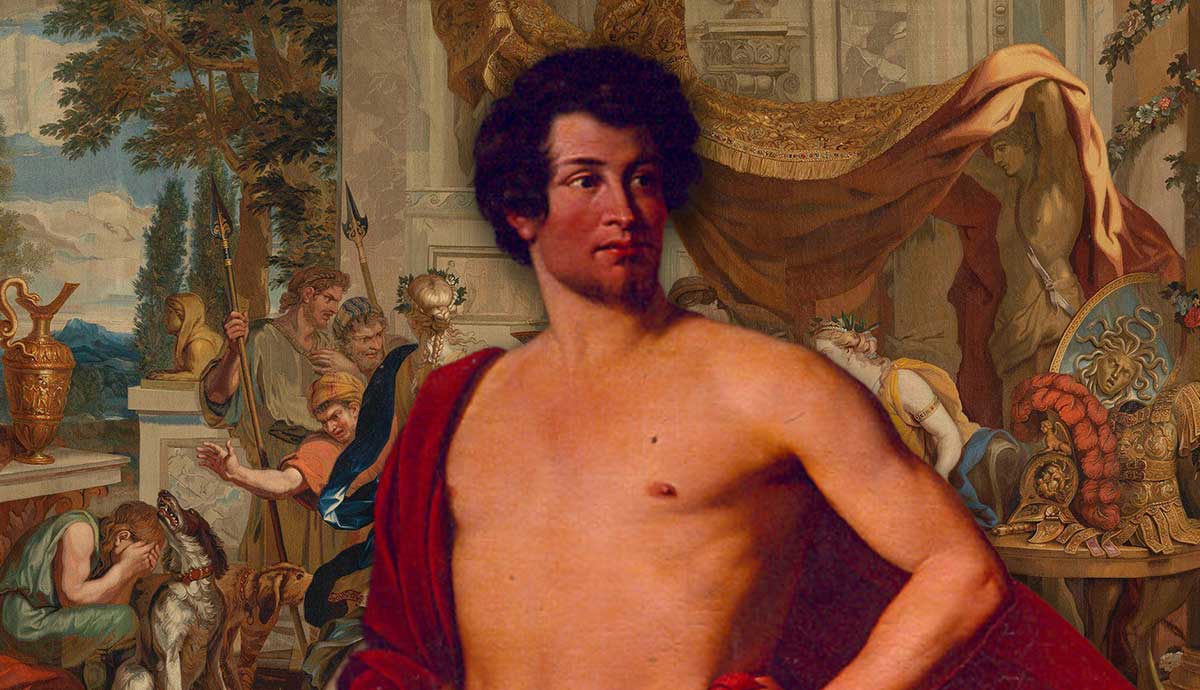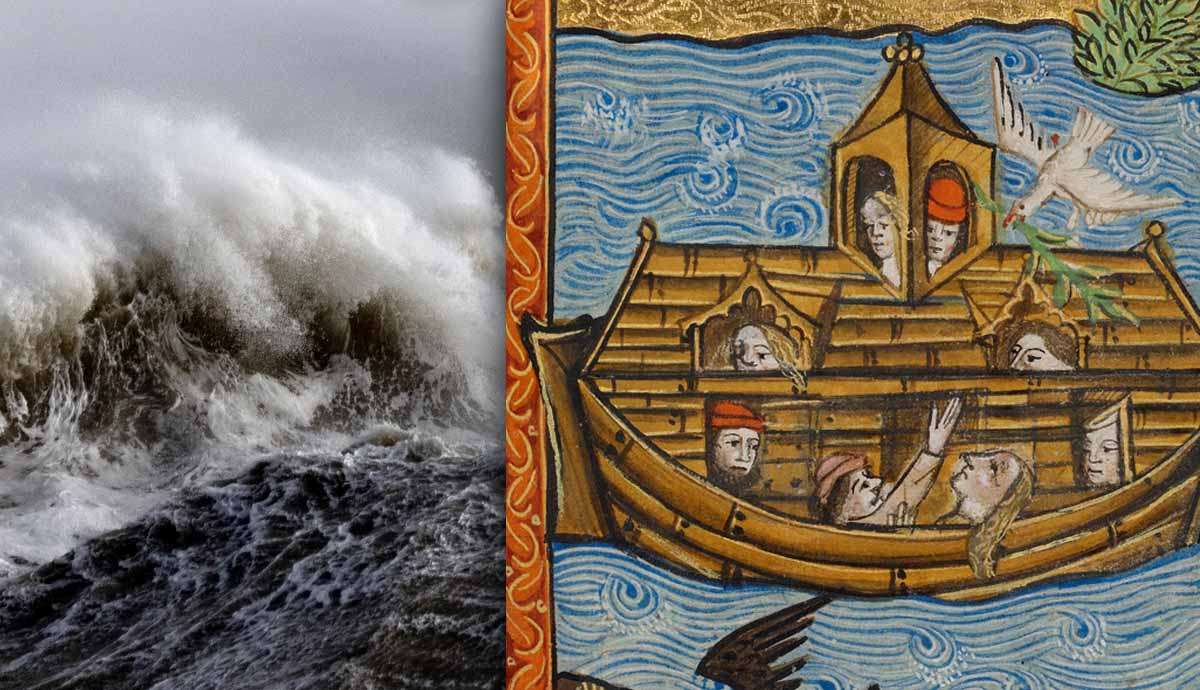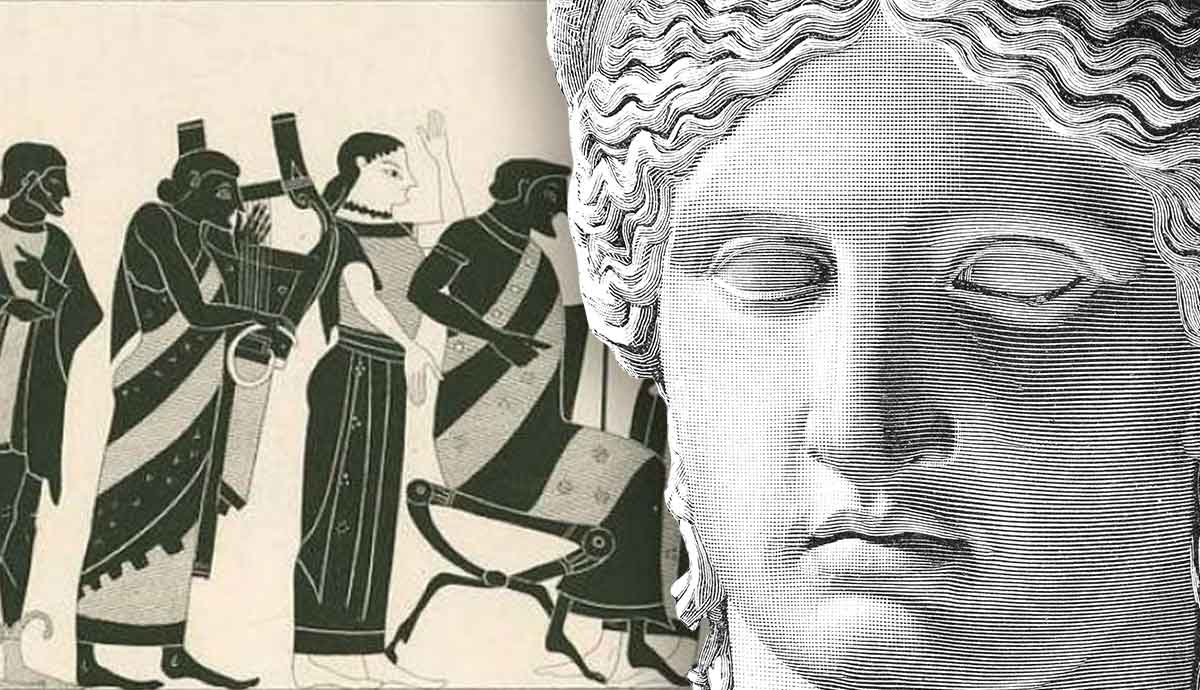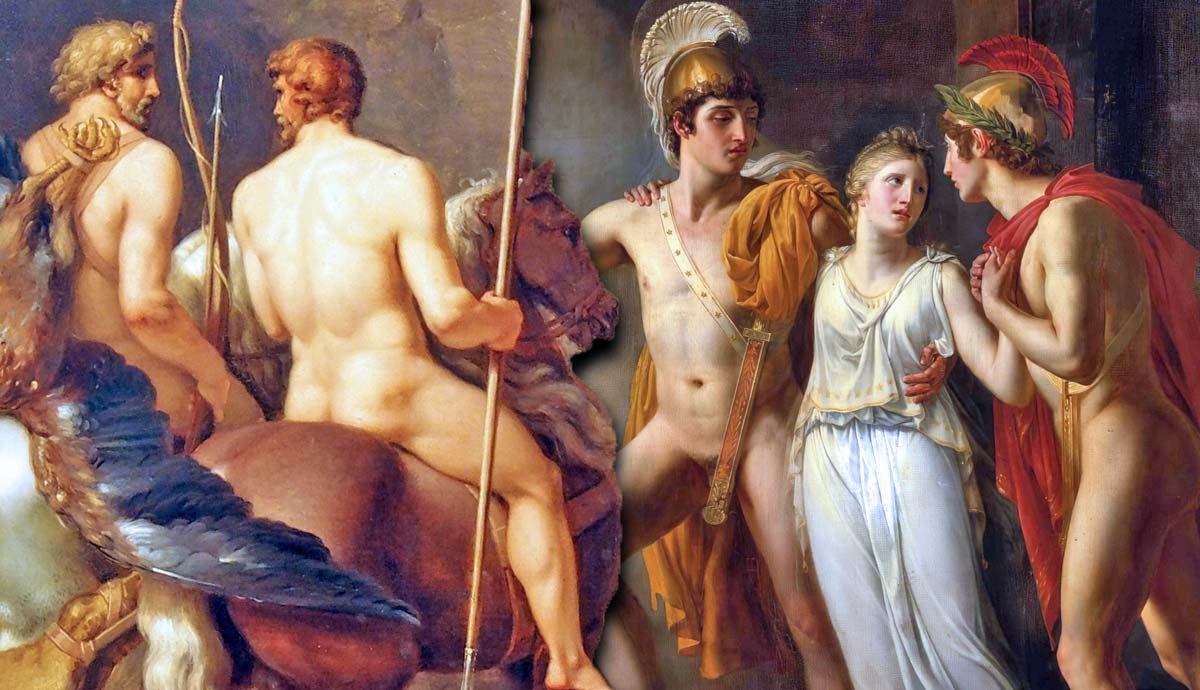
Many may not know the tale of the divine twins Castor and Pollux, also known by their shared title, the Dioscuri. These Spartan heroes appeared in many Greek myths. They joined Jason’s quest for the golden fleece, participated in the hunt for the Calydonian boar, and saved their sister Helen of Sparta from an unwanted suitor. However, the Dioscuri are most notable for their unique death and the devoted cult that grew around their shared story. Read on to learn about the often-overlooked divine twins, Castor and Pollux.
Who Were Castor and Pollux?
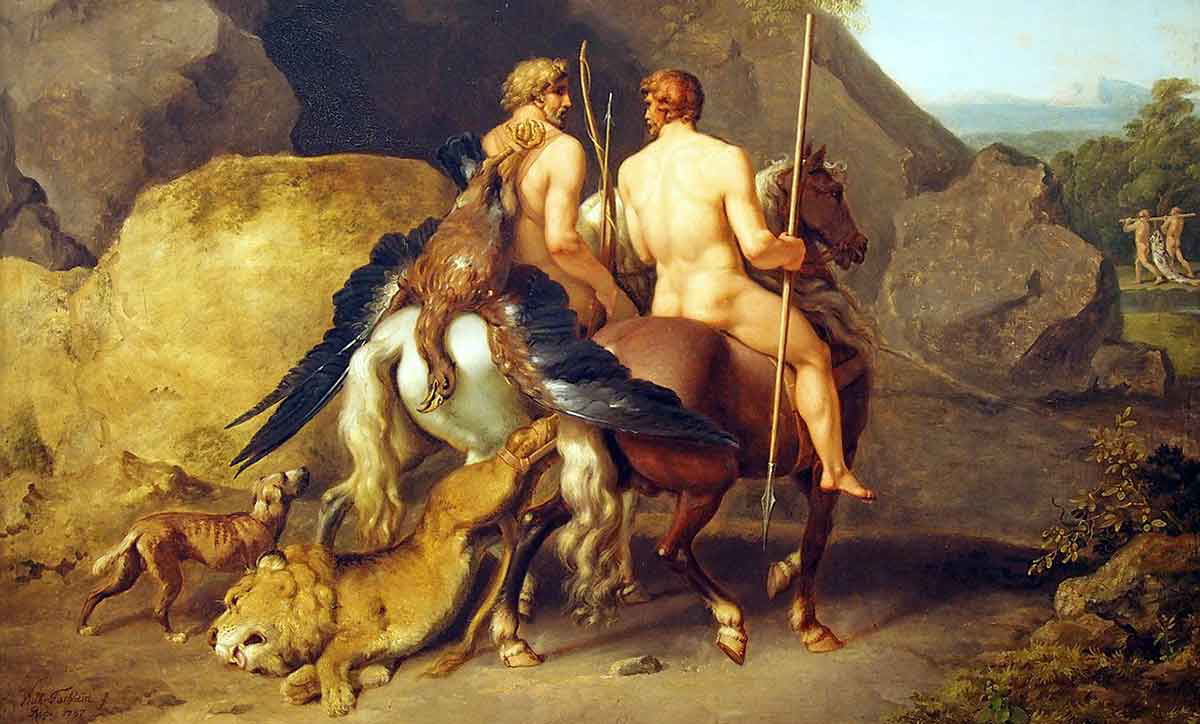
Castor and Pollux embody several typical traits of strong, fearless, and handsome youthful heroes. The twins are often depicted on horseback and are strongly associated with horses and battle. The concept of a divine pair of horse-riding twins that come to the aid of mortals is present in many other Indo-European cultures, such as the Ashvins twins from Hindu mythology and the Asvieniai twins from Lithuanian mythology.
The brothers were renowned for their mutual love and respect for one another; they were inseparable best friends who supported each other and never argued. Over time, their relationship became an ideal example of platonic brotherly love, military comradeship, and loyalty.
The twins were not entirely identical, and each had distinct character traits. Castor had a particular affinity for horses and military endeavors; he was a skilled rider and cavalryman. Pollux was renowned for his strength, boxing skills, and wisdom. The brothers featured in several notable adventures together. However, like many Greek myths, their multiple appearances add confusion to the already complex timeline of Greek mythology.
Worship of the Dioscuri

The worship of Castor and Pollux became widespread in Greece, especially in the twins’ hometown of Sparta and later in Rome. The Dioscuri were revered as twin helper gods with stars on their heads, believed to protect warriors in battle and guide sailors during storms in the form of St. Elmo’s fire. They were also associated with horsemanship and seen as protectors of horse riders during travel. Before battles, soldiers would pray to and sacrifice to the twins, seeking their protection.
Temples and statues dedicated to the Dioscuri have been discovered throughout Greece, particularly in the Peloponnese, including a temple complex attributed to them found at Menelaion in Therapne, near Sparta. In other areas of Greece, such as Attica, the twins were worshiped under the name Anakes, and their primary temple in Athens was named Anakeion.
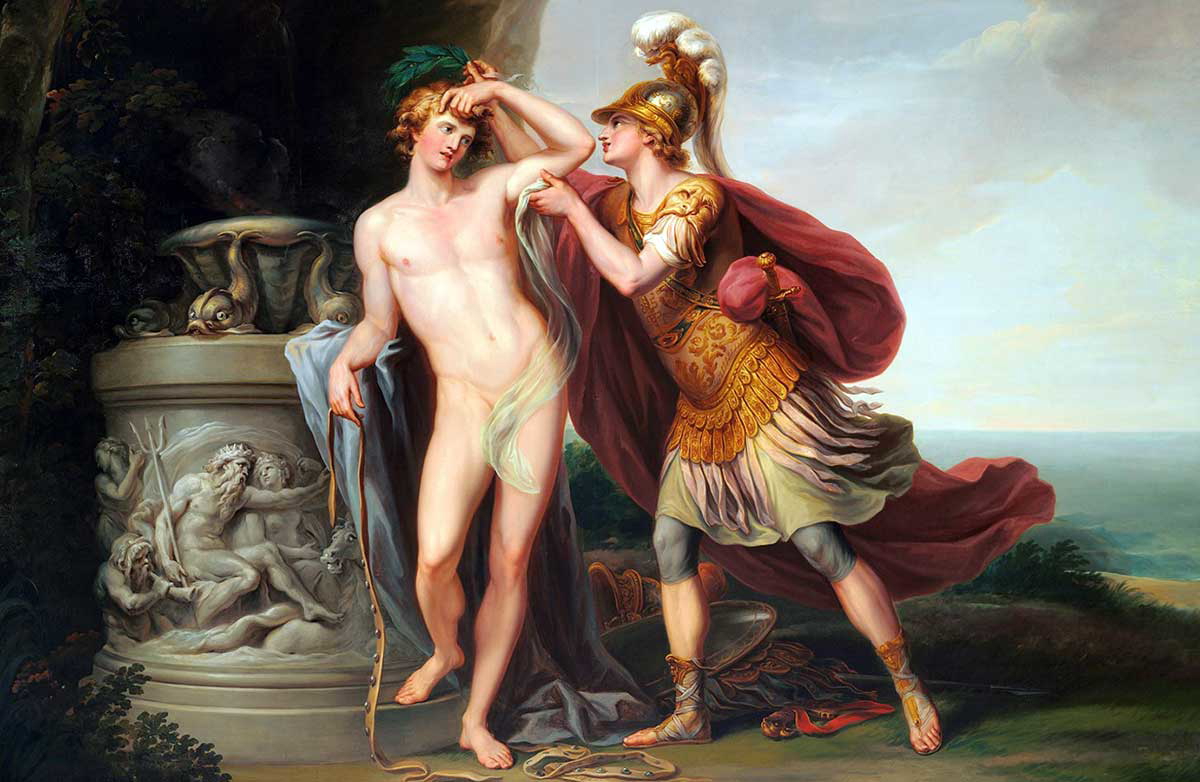
Worship of the Dioscuri spread to Rome through the city’s contact with Magna Graecia, Greek-speaking settlements on the southern coast of the Italian peninsula. During the Battle of Lake Regillus in 496 BC, the Roman Republic fought against the Latin League led by the banished Roman King Tarquinius Superbus. Legend claims that two divine warriors wearing purple robes and riding white horses appeared during the battle and helped the Romans secure victory. Later, these two horsemen were seen in the Roman forum, where they drank from a fountain, announced the Romans’ triumph, and vanished.
The horse riders were recognized as Castor and Pollux. In 484 BCE, the Romans built a temple to honor them in the Roman forum. Three upright pillars from the temple still stand in Rome today. Castor and Pollux were thought to have assisted the Romans in various battles, including the Battle of Pharsalus.
The Dioscuri’s association with horsemanship and battle appealed to many Romans, especially those of the equestrian social class. While both twins were worshiped, Castor’s connection to horses and battle made him more prominent among the Romans, even leading them to collectively refer to the twins as the Castors instead of the Dioscuri.
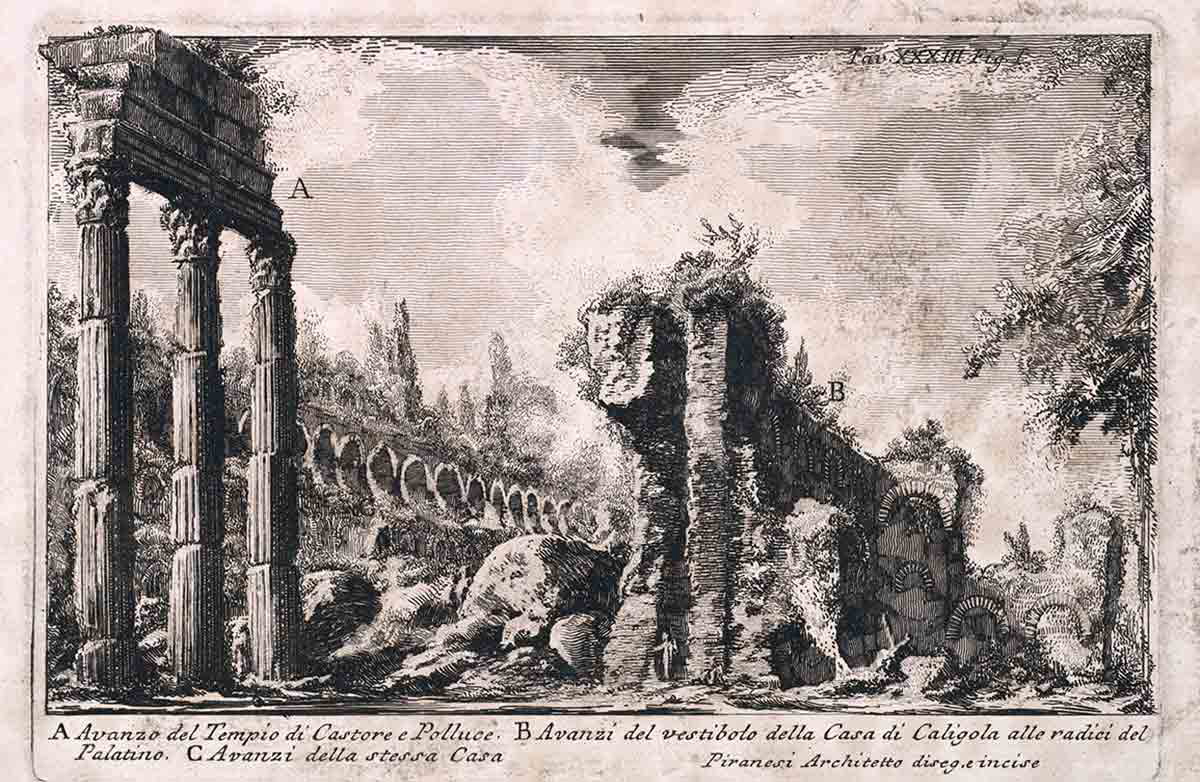
The Greeks and Romans both had festivals to honor the twins. The twins were celebrated in Greece at the Dioscuria festival, strongly associated with the theoxenia rite. This rite involved an extravagant feast hosted by a private individual or the public, where a specific god was invited to dine and participate in the festivities.
The Romans held a festival and parade to celebrate the twins on the Ides of Quinctilis, or July 15, the day their temple was dedicated. The parade included Roman men of the equestrian social class riding horses from the temple of Mars to the twins’ temple, then ending at Jupiter’s temple.
Mythology of Castor and Pollux: Leda and the Swan

Castor and Pollux are commonly called the divine twins or the Dioscuri, meaning “sons of Zeus.” However, these titles are somewhat misleading, and their unusual birth helps to explain the pair’s distinctive epithets. Like many Greek heroes, the story of Castor and Pollux starts with the insatiable lust of Zeus, the King of the gods.
The Dioscuri’s mother was Leda, the daughter of King Thestius of Pleuron in Aetolia. Leda married Tyndareus of Sparta after he sought refuge in her father’s court. Tyndareus and his brother Icarius had been exiled by their brother Hippocoon, the newly crowned King of Sparta. King Thestius hosted Tyndareus and Icarius, who offered to help defend and fight against Thestius’s enemies in return. In gratitude for his loyalty, King Thestius presented Tyndareus with his daughter Leda’s hand in marriage. Tyndareus and Leda later became the King and Queen of Sparta after Heracles killed King Hippocoon and all his sons after Hippocoon refused to absolve the hero for the murder of Iphitus of Oechalia.
Leda was considered one of the most beautiful mortals of her time and soon caught Zeus‘s eye on Mount Olympus. Zeus transformed into an elegant swan to seduce and sleep with Leda and conceal his infidelity from his wife, Hera, the Queen of Olympus. Disguised as a swan, Zeus flew and landed on Leda’s lap, pretending to seek protection from a pursuing eagle. This act of divine conception, combined with Leda sleeping with her husband Tyndareus later that evening, led to a rather unique pregnancy.
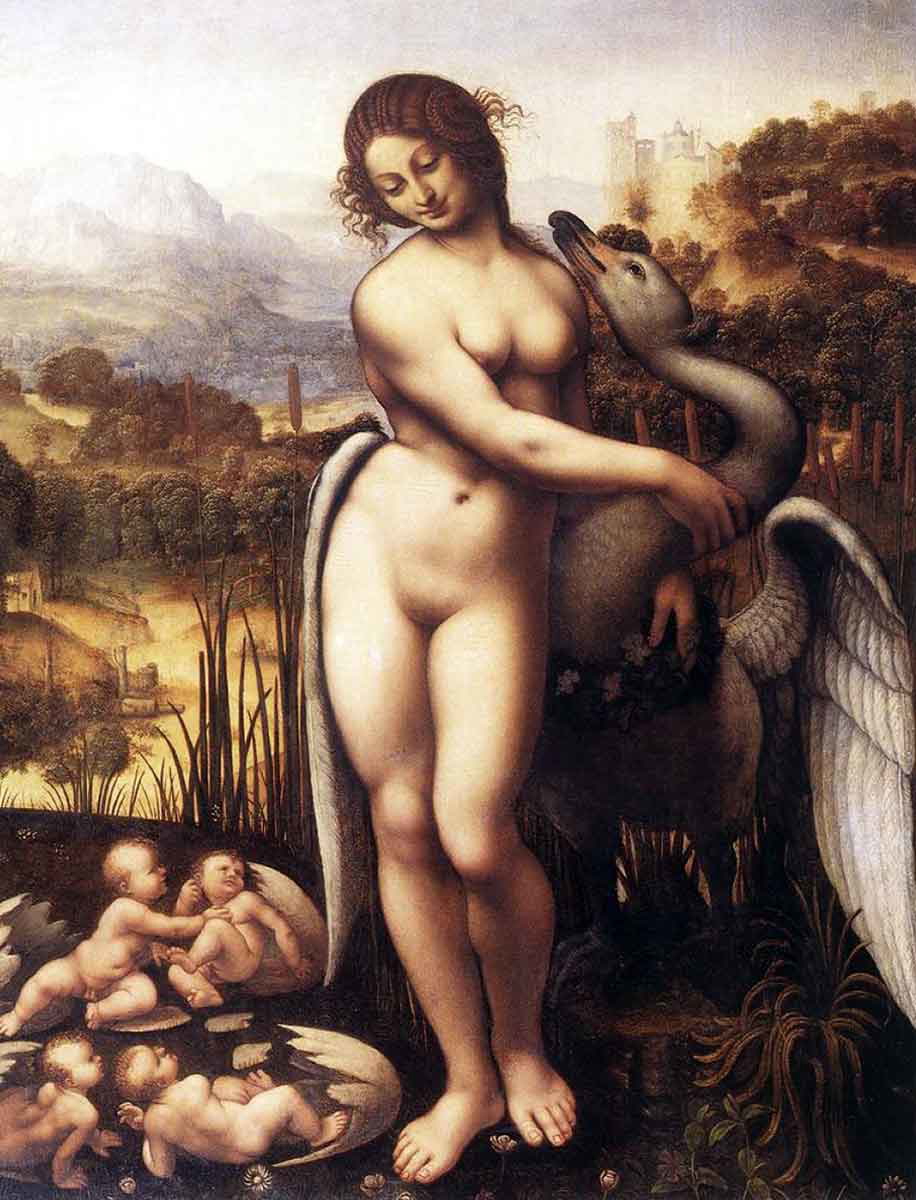
Instead of a traditional birth, Leda laid two eggs. Each egg hatched a set of twins: Castor and Pollux from one egg and Helen and Clytaemnestra from the other. Additionally, both Helen and Pollux were the children of Zeus, while Castor and Clytaemnestra were the children of Tyndareus. This rare occurrence, heteropaternal superfecundation, happens when a woman carries twins with different fathers and appears in other myths, such as the birth of Heracles.
In some versions of the myth, both twins are described as the children of Zeus or Tyndareus, while a few rare accounts claim that their mother was not Leda but Nemesis, the goddess of retribution. However, in the more widely known version of the myth, Castor and Pollux are not twins but, along with their sisters, technically quadruplets, and only one of them is the son of Zeus, making their shared title less than accurate.
The First Abduction of Helen

Castor and Pollux’s most notable myth concerns rescuing their sister Helen from an unwanted abductor. Helen of Sparta was considered the most beautiful mortal in the world, and her beauty played a crucial role in sparking the Trojan War. However, before being taken by Paris of Troy, Helen was kidnapped while still only a child by the renowned hero Theseus of Athens.
Both Theseus and his close friend Pirithous suffered the loss of their wives in quick succession. Pirithous’s wife, Hippodamia, tragically died while giving birth to their son, Polypoetes. At the same time, Theseus was mourning the death of his wife, Phaedra, and son, Hippolytus.
Before marrying Phaedra, Theseus had Hippolytus with the Amazonian Queen Hippolyta or her sister Antiope. Hippolytus was gorgeous but rejected love and devoted himself to Artemis. This angered Aphrodite, who caused his stepmother, Phaedra, to fall in love with him out of spite. When Hippolytus rejected her, Phaedra falsely accused him of assault and then took her own life. Theseus, unaware of the truth, asked Poseidon to curse Hippolytus, leading to his death in a chariot accident. Later, Artemis revealed the tragic truth to Theseus.
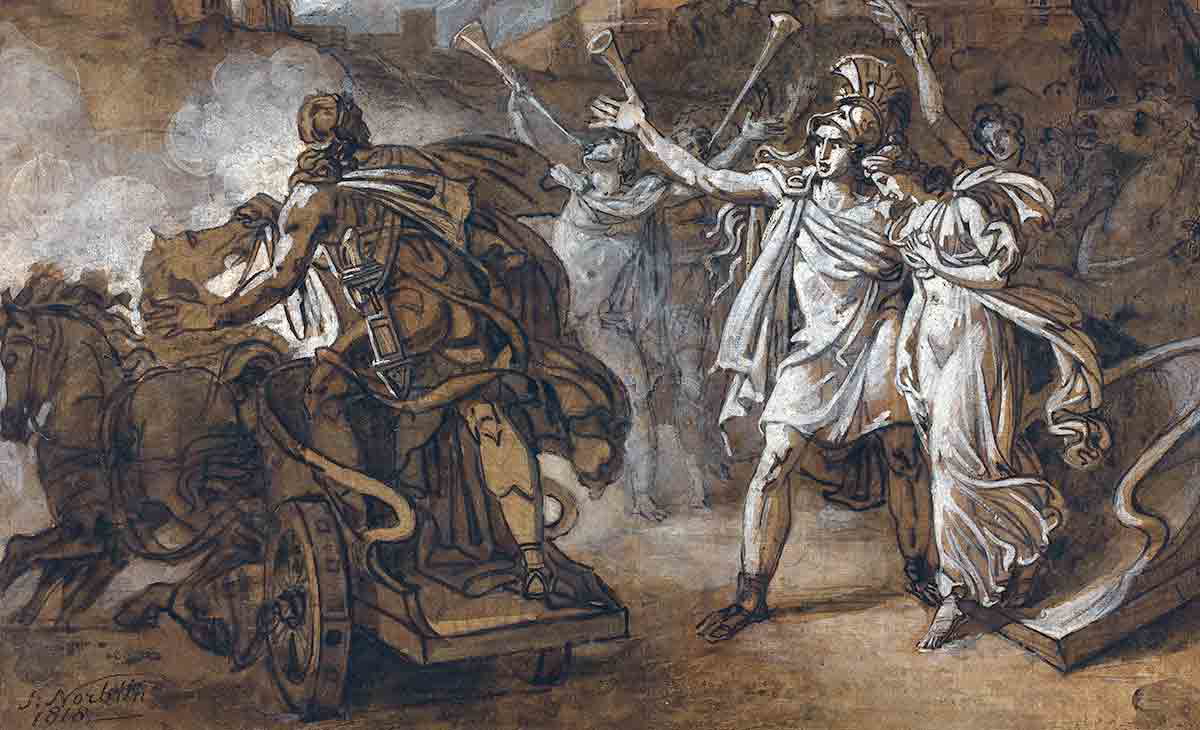
Theseus and Pirithous come together to deal with their grief and decide to help each other find new wives. They believed that only Zeus’s daughters were worthy of marrying them. Pirithous chose to marry Persephone, the Queen of the Underworld, while Theseus decided to marry Helen of Sparta, who, according to the rather jumbled mythological time frame, was still a child.
The experienced heroes quickly sneaked into Sparta and abducted Helen while she was dancing in the temple of Artemis. Since Helen was still a child, Theseus hid her with his mother, Aethra, in Aphidnae in Attica while he and Pirithous descended into the Underworld to capture Persephone. Kidnapping a mortal princess is one thing, but abducting a goddess is an entirely different prospect. Less than a day into their descent, the Furies ambushed the pair, and Hades and Persephone imprisoned them for their foolish attempt to take the Queen of the Dead.
After Helen’s abduction, Castor and Pollux gathered a Spartan army and marched on Athens. However, Theseus was still imprisoned in the Underworld, and he had not disclosed to anyone in Athens that he had hidden Helen with his mother in Aphidnae. Unfortunately for Athens, the twins did not believe their claims that Helen was not within their walls and declared war. Athens soon fell to the twins, and without Theseus’s leadership, the rest of Attica followed.

Eventually, Castor and Pollux rescued Helen in Aphidnae but were unsatisfied. Both wanted to punish the absent Theseus for the distress he had caused to their sister and family. In retaliation, they took Theseus’s mother, Aethra, as a prisoner. Aethra would become Helen’s handmaid and stay by her side until the end of the Trojan War.
Shortly after Helen’s rescue, Heracles freed Theseus during his final labor but could not save Pirithous from Persephone’s wrath. However, Castor and Pollux placed Theseus’s rival Menestheus on the Athenian throne in Theseus’s absence after their sweeping victory. Once a beloved hero and King of Athens, Theseus returned to the city as a failure who had allowed his kingdom to fall due to his selfish desires. Theseus fled to the island of Skyros, where he would later meet his end.
The Argonauts
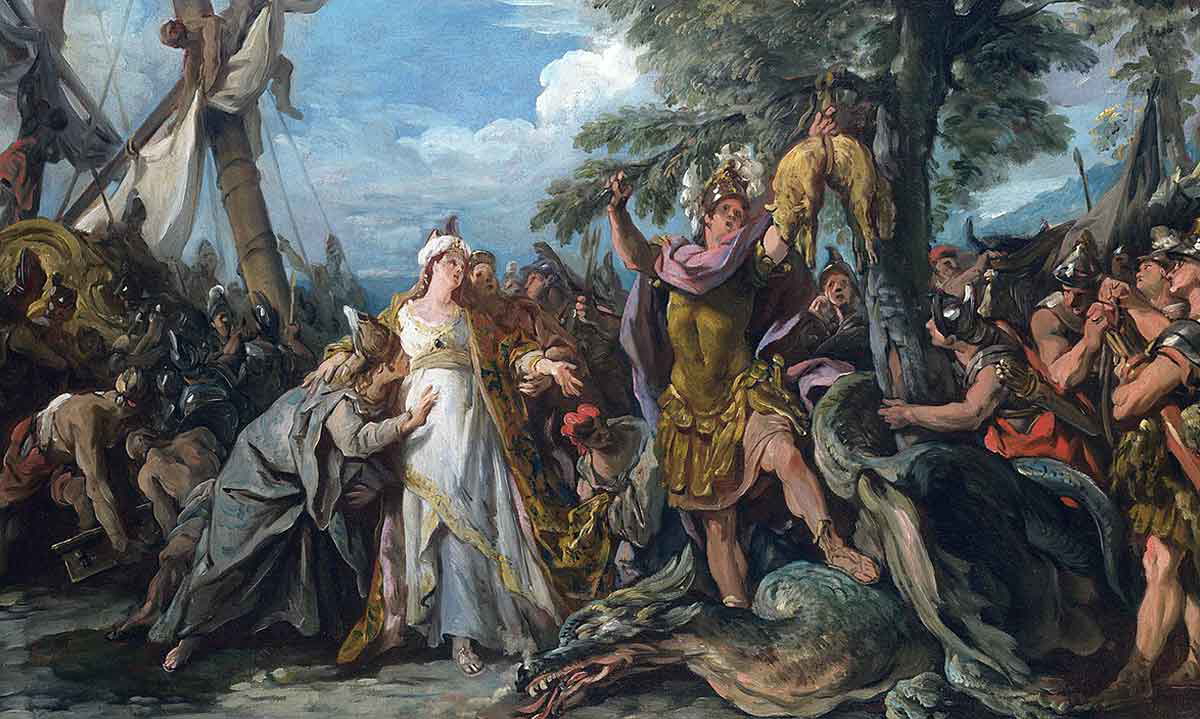
The Dioscuri were also among the many heroes who joined the crew of the Argo and sailed with Jason to Colchis to retrieve the Golden Fleece. While the names and crew members of the Argonauts tend to shift and change through the various sources, Castor and Pollux remain some of the few consistent members.
During the voyage, Pollux proved instrumental when the Argonauts encountered the savage King Amycus of the Bebryces. Amycus was renowned for his incredible strength and enjoyed challenging anyone who passed through his kingdom to a boxing match. He demanded that the most skilled boxer among the Argonauts fight him. Pollux volunteered, quickly proved his skill in the ring, and defeated Amycus. In some accounts, Pollux kills Amycus with a blow to his elbow, while in others, he lets the king live and ties him up, allowing the Argo to continue its voyage.
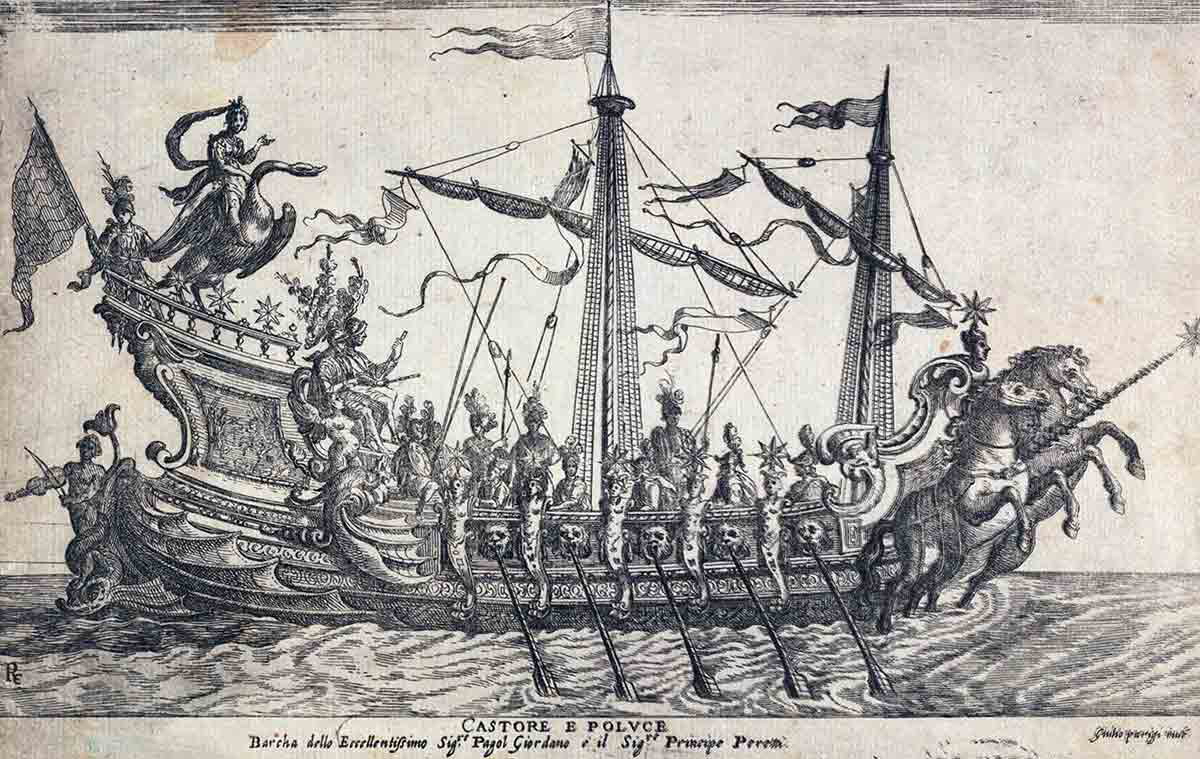
The Dioscuri excelled at seamanship and proved themselves the best sailors among the Argonauts on several occasions. Thanks to their expertise, Castor and Pollux helped sail the Argo away from many disasters at sea.
After the twins guided the Argo through a particularly destructive storm, the pair were anointed with stars on their heads to honor their expert seamanship. In time, the Dioscuri would be hailed as the guardian angels of sailors in ancient Greece and Rome. Ancient sailors believed that the Dioscuri would appear and assist them in times of need in the form of St. Elmo’s fire. This weather phenomenon appears around ship masts and other pointed objects as a glowing electric field during or just before a thunderstorm.
The Great Calydonian Boar Hunt and Other Myths
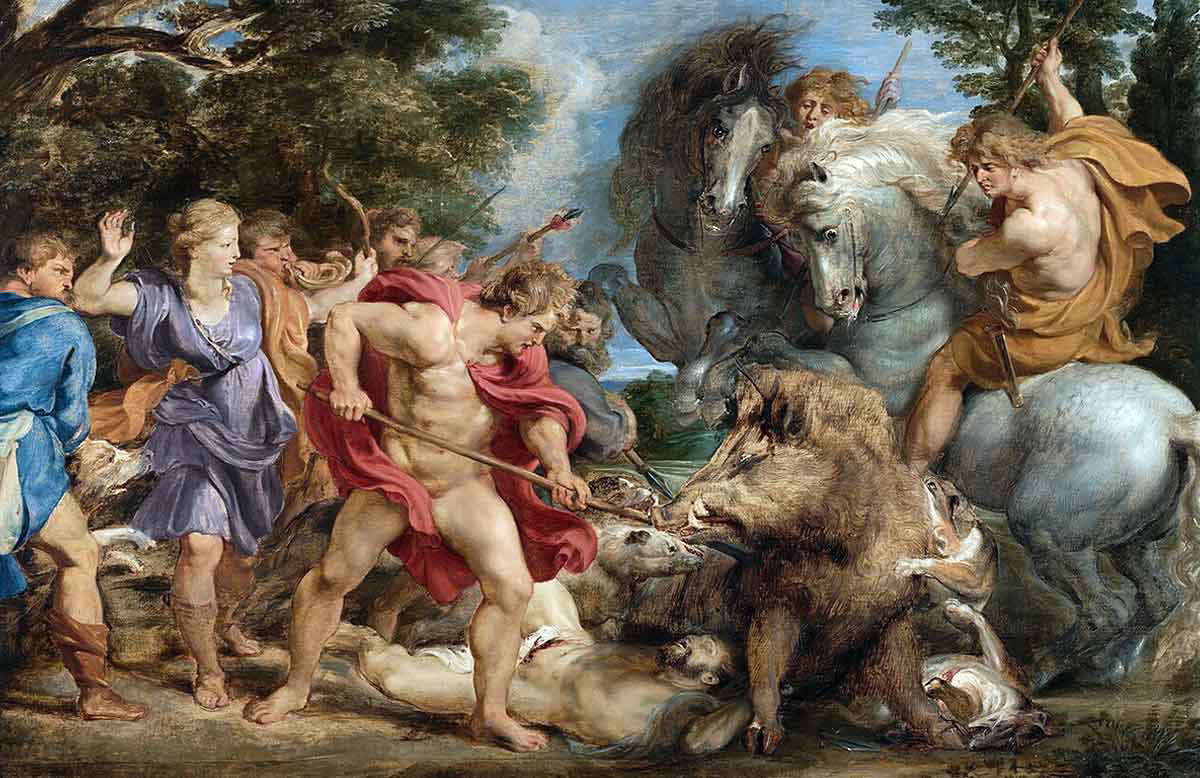
After their journey on the Argo, the Dioscuri also participated in the Calydonian boar hunt led by their fellow Argonaut, Prince Meleager of Calydon. Artemis had sent the monstrous Calydonian boar to punish Meleager’s father, King Oeneus, for not offering her the appropriate sacrifices. The twins were accompanied by other famous heroes such as Theseus, Pirithous, the heroine Atalanta, and many fellow Argonauts, including Jason, Peleus (the father of Achilles), and his brother Telamon (the father of Ajax the Greater). While Atalanta and Meleager eventually killed the boar, the twins were noted for hunting the boar on horseback and almost landing the killing blow if the boar had not rushed into nearby trees for cover.
The Dioscuri appeared in several minor myths associated with their fellow Argonauts. They participated in the funeral games of Jason’s uncle Pelias and took part in the first Olympic games established by Heracles. Additionally, the twins assisted their old crewmembers, Jason and Peleus, in sacking the city of Iolcus after its King, Acastus, attempted to assassinate Peleus. The Dioscuri were said to have founded the city Dioscurias in the Pontus region of the Black Sea coast.
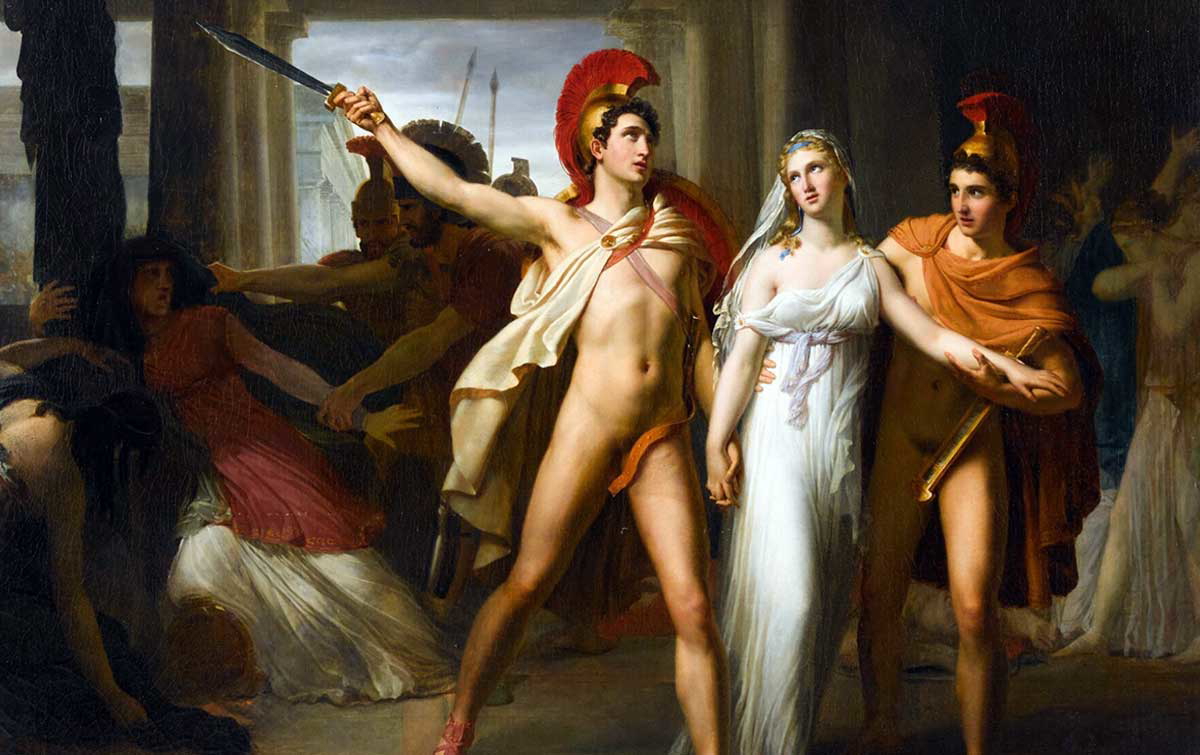
Helen’s first abduction highlights Greek mythology’s complex and, at times, inconsistent nature. According to the myth, Helen was underage during her abduction. However, if that were the case, her twin brothers, the Dioscuri, would also have been underage, making it unlikely for them to lead an army against Athens.
Additionally, Theseus and Pirithous were supposed to join the Dioscuri in the Calydonian Boar hunt, which had to occur before Helen’s abduction and Pirithous’s permanent imprisonment in the underworld. While these details are important to consider, it is also important to note that Greek mythology does not have a definitive canon, and many of its stories manipulate and bend time to fit the narrative.
Mythology of Castor and Pollux: Death and Immortality
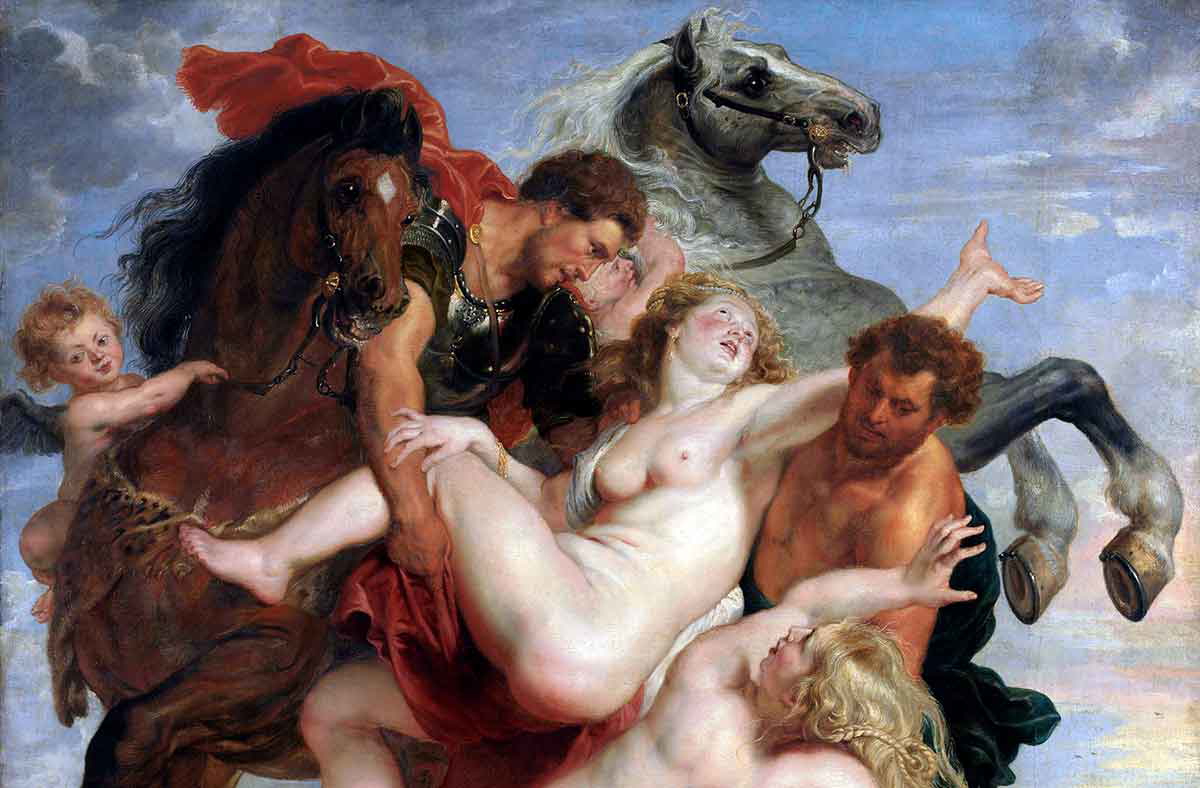
The Dioscuri were very protective of both their sisters. Aside from rescuing Helen from Theseus, they kept many of her potential suitors in line until she eventually married. However, the Dioscuri are notably absent during Helen’s more famous second abduction and the Trojan War. This was because Castor and Pollux died only a few hours before Paris abducted Helen.
The death of Castor and Pollux can be traced to a feud between them and their cousins, Idas and Lynceus, the twin sons of Aphareus, King of Messenia. Idas and Lynceus were Argonauts like their cousins and participated in the Calydonian boar hunt. Lynceus proved invaluable to the Argonauts as the lookout on the Argo due to his incredible eyesight, which allowed him to see beyond the horizon and through walls, trees, and the dark.
Castor and Pollux had fallen in love with the twin sisters Phoebe and Hilaira, the daughters of their uncle Leucippus, who lived in Messenia. However, the sisters, known as the Leucippides, were already betrothed to Idas and Lynceus. Instead of allowing the marriage to occur, the Dioscuri abducted the sisters and took them back to Sparta. The twins married, and Castor and Hilaira had a son named Anogon, while Pollux and Phoebe had a son named Mnesileus.
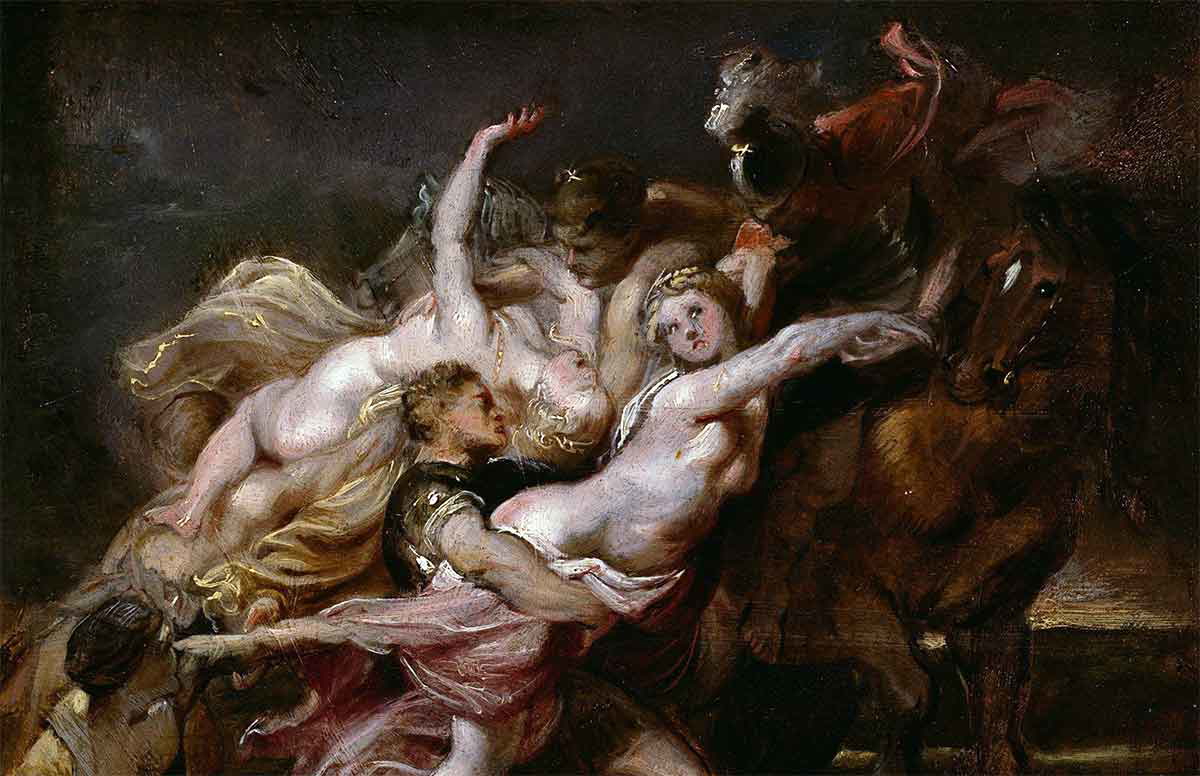
The conflict escalated when Idas and Lynceus joined the Dioscuri on a cattle raid in Arcadia. To get back at the Dioscuri, Idas, and Lynceus tricked them out of their share of the cattle by proposing a rigged eating contest. After the raid, the four cousins roasted one of the cows to celebrate. Before the feast, Idas suggested that instead of dividing the cattle equally, they should have a contest where the first two to finish their food would each get half the cattle. The Dioscuri agreed, not realizing that their cousins had eaten most of their food beforehand. The Dioscuri lost and realized their cousins had deceived them while they rode back to Messenia with all the cattle.
The Dioscuri were furious about the deception and decided to take action. After returning to Sparta, they stealthily entered Messenia under darkness to retrieve the stolen cattle. However, their covert mission was quickly discovered thanks to Lynceus’s exceptional eyesight, and a tense showdown ensued under the cover of night.
In the chaos, a fierce battle broke out between the cousins. Idas fatally wounded Castor, while Pollux struck down Lynceus. As Idas attempted to attack Pollux from behind, Zeus fired a thunderbolt that killed Idas, saving his son.
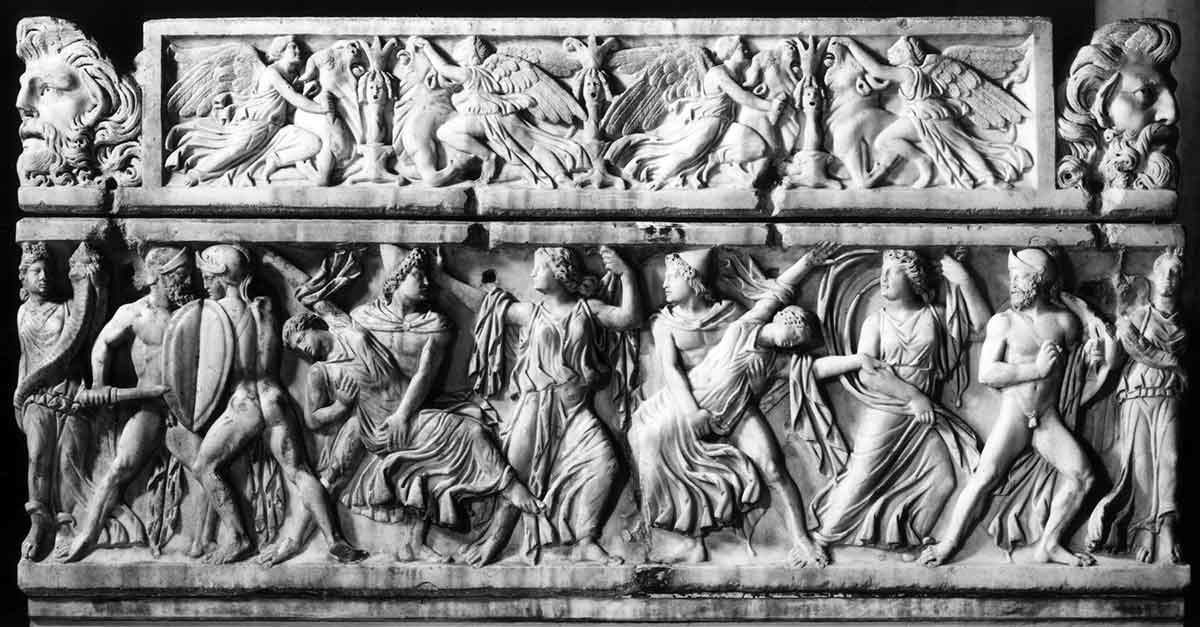
After the battle, Pollux rushed to his brother’s side, but Castor’s injuries were fatal. Pollux begged Zeus to save his beloved brother. Although Zeus could not rescue Castor from death, as a son of Zeus, Pollux was eligible for immortality. Touched by Pollux’s brotherly love, Zeus offered to allow the twins to share this immortality. Pollux eagerly agreed, and the Dioscuri became both mortal and immortal, enabling them to alternate between the comforts of Olympus and the darkness of the Underworld daily. Despite Pollux’s selfless sacrifice, the twins’ continual switching meant that they would never be able to see each other again. However, Zeus granted them a reunion by immortalizing them as the constellation Gemini, finally bringing the inseparable brothers together once more.
On the fateful night when the Dioscuri left Sparta and fought with Idas and Lynceus. A guest of the Spartan palace named Paris of Troy took advantage of the Dioscuri’s absence and abducted their sister, Helen. This time, the Dioscuri were not there to protect or rescue their sister, ultimately leading to the Trojan War’s start.
